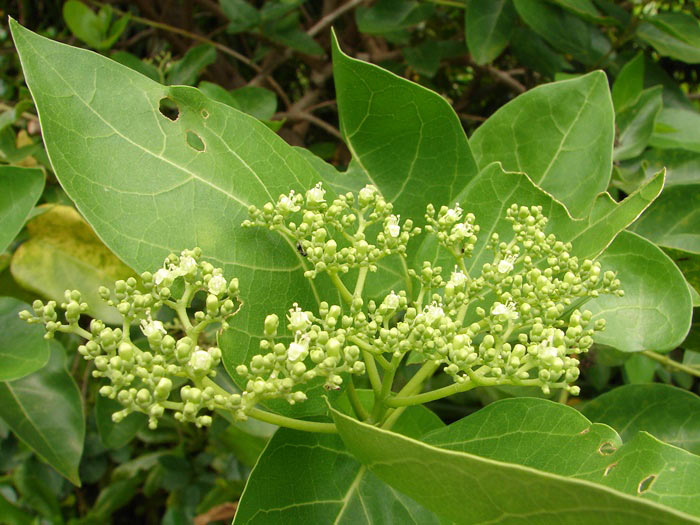Premna serratifolia
The headache tree is an evergreen shrub native to tropical and subtropical coastal regions. When its leaves are crushed or damaged, they release a strong, distinctive odor that many find unpleasant. In Taiwan, the smell is often compared to that of a fisherwoman working at a harbor—sharp, fishy, and persistent—earning the plant its colorful local nickname “stinky lady,” or sometimes “hairy fish stinky wood.”
Despite the odor of its foliage, the headache tree transforms beautifully during its flowering season. It produces abundant clusters of small white to pale pink flowers that attract a wide variety of pollinators. Butterflies, bees, and other insects frequently visit the blossoms to feed on nectar, creating a lively scene of ecological interaction.
The headache tree is also valued for its resilience and adaptability. Its strong sprouting ability and tolerance to pruning make it a popular choice among bonsai enthusiasts. By selectively removing bark sections or pruning mature leaves, artists can encourage the growth of smaller, denser foliage and shape the plant into elegant forms. Because it readily regenerates new shoots after cutting, it can be repeatedly trimmed and styled to achieve the desired aesthetic appearance.
This species is widely distributed across tropical and subtropical lowlands from India to northern Australia, extending through southern China, the Ryukyu Islands, and the Philippines. In Taiwan, it is commonly found in coastal forests, plains, and foothills. Its tolerance to salt spray, wind, and poor soils makes it particularly well-suited to coastal environments, where it serves as a hardy ornamental and windbreak species.
At the National Museum of Natural Science, headache trees are cultivated in the Coral Atoll Area of the Botanical Garden. Several mature specimens can also be seen near the entrance of the Special and Ferns Exhibit Room and along the wooden walkway rest area. During the summer flowering season, the trees become important nectar sources for numerous butterfly species, adding both ecological and aesthetic value to the garden landscape.
